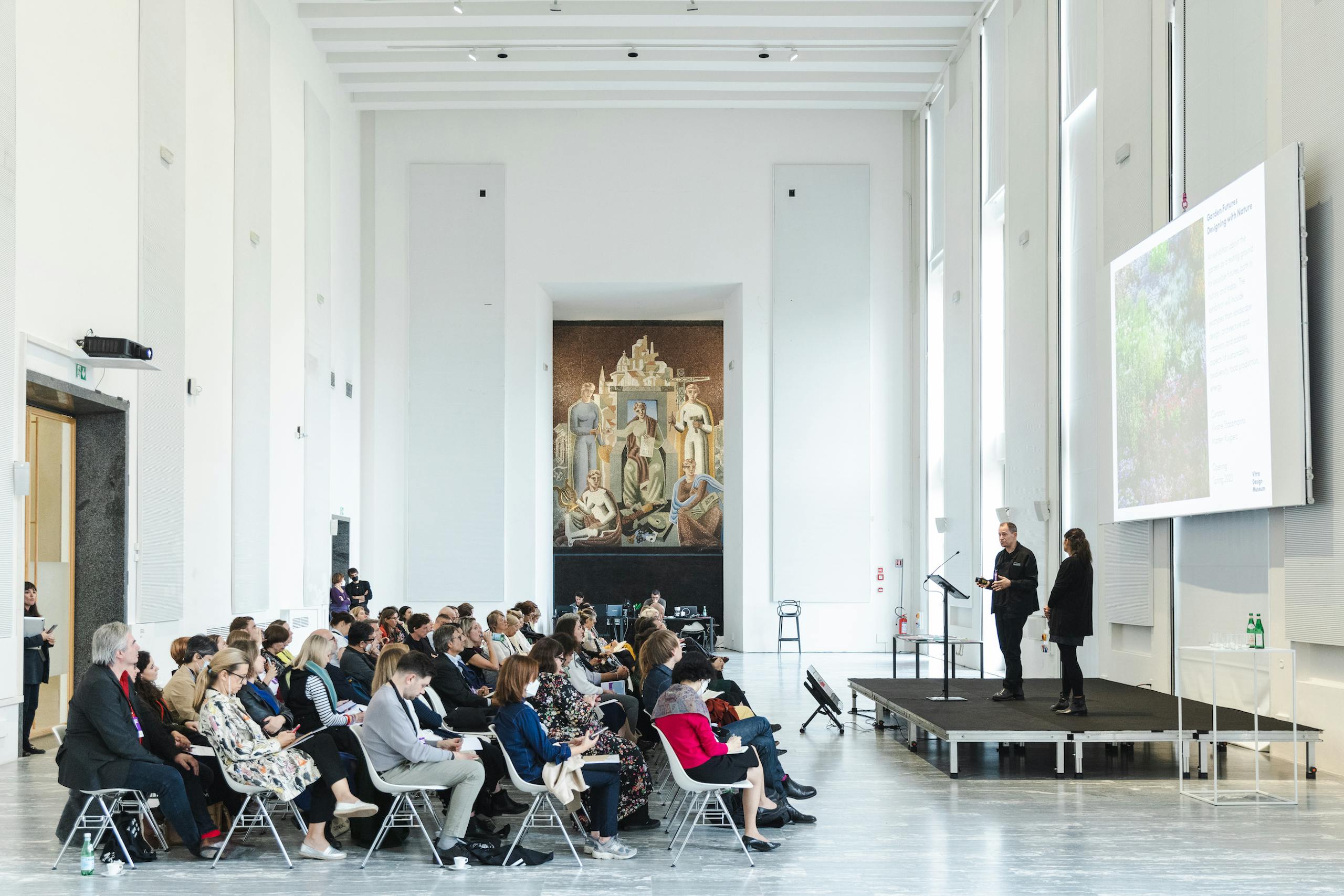

The annual meeting between the members of muscon – Museum Network Conferences, with over 90 participants representing some of the most important cultural institutions worldwide, has just ended at Triennale Milano. An opportunity to spot the upcoming cultural trends.
The latest frontiers of digital art and sound design, contemporary reinterpretations of traditional clothes and textiles such as the sari or tartan, the appreciation of figures who are well known in their countries but not as much famous abroad, such as the Australian Marc Newson or the Serbian (but based in Scotland) Bernat Klein, or even the search for a new centralization for European rural areas with the contribution of artists and designers. These are just some of the topics that have been discussed these days by the directors and curators of the main international art, design and architecture museums involved in the yearly meeting of muscon – Museum Network Conferences hosted by Triennale Milano, and in the near future they will be the focus of major exhibitions around the world.

Established in 1996 by an initiative of the Vitra Design Museum in Weil am Rhein and returning to presence after two online editions, the series of conferences is much more than just a "docket of traveling exhibitions" or a professional networking opportunity to establish partnerships between institutions: it is, instead, a firsthand observatory on cultural trends that provides insight on the directions that artistic and design research is taking in different countries.

Members of the muscon network in the Giardino Giancarlo De Carlo
Trying to sum it up, we see, for example, that the environmental crisis is still very present in the minds of the curators, whether it is questioning the transition from a fuel-based economic system to a new bio-economy—we see this in the exhibition At the coalface. Design in a post-carbon age currently being held at the CID Grand-Hornu in Belgium, which investigates the new uses of coal and the future of mining—or researching, and presenting to the public, a range of bio-based alternatives to plastic materials (as LUMA in Arles, for example, also engaged in the ecological valorization of underutilized local raw materials such as Camargue seaweed, has been doing for some time).

Talking about exhibition design, analog and digital also seem to co-exist more than peacefully. While many of the exhibition projects discussed at muscon 2022 involve immersive installations, which are always popular with visitors, the origins of material culture continue to be an inspiration for the present. For example, objects from the personal collection of artist Ai Weiwei, a great lover of ancient Chinese artifacts, will be the starting point for a reflection on the value of things and experiences in an exhibition coming to the Design Museum in London in spring 2023.

Credits
All photos by Gianluca Di Ioia
Related articles
